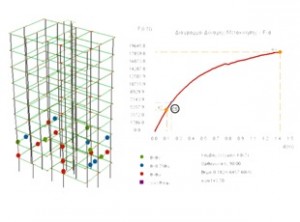
Study and research of the behavior factor “q” and its effect upon all concrete building structures that are designed by the contemporary EC8, part 1
The purpose of this post-graduation thesis deals with the study and research of the behavior factor “q” and its effect upon all concrete building structures that are designed by the contemporary Eurocode EC2, part 1.1 and EC8, part 1.
First of all, a general reference to the meaning of plasticity of concrete building structures is made, since plasticity relates directly to the behavior factor “q”. Consequently, the role of the behavior factor “q” is analyzed based on the linear seismic analysis and then references of the behavior factor “q” are separately displayed both by the previous Hellenic Seismic Code (EAK-2000) and the new Eurocode EC8, part 1. Finally, a qualitative and quantitative comparison of the values of the behavior factor “q” that both Regulations require is implemented.
Furthermore, the essay studies the effect of the value of behavior factor “q” upon the overall actual cost of concrete building structures. For this purpose several case studies of concrete building models are analyzed with static system variations between frame system and coupled wall system. On those building models analysis for various values of the behavior factor “q” is applied, starting from the minimum value of “q“ = 1,5 to the maximum allowable value of “q” depending on the seismic Regulation respectively. The results of the measurements of the analysis show a noticeable clear decrease of the initial building structures expenditure, specifically on building structures designed for larger values of the behavior factor “q” compared to those designed for smaller values.
In conclusion, an inquiry of the application of non-linear static analysis “Push-over” for the inspection or the reconsideration of the values of the multiplication factor αu/α1, according to which is in many cases the behavior factor “q” on building structures is determined based on the Eurocode EC8, part 1. For this purpose a framework of parametric analysis has been planned, wherein a series of non-linear “Pushover” analyses has been implemented with the use of technical software on a number of different cases as a result of the variation of a series of parameters, such as height, geometry of the floor plan (length/width ratio) and the relationship of geometrical stiffness of columns and beams.



